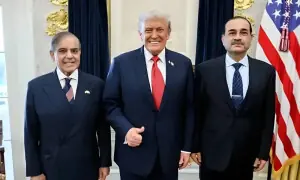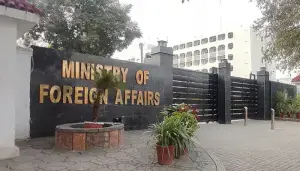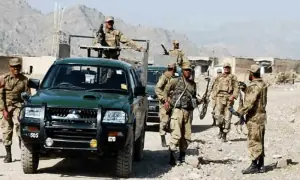A costly blow
The United States has recently announced a 29% tariff on several products imported from Pakistan, and this decision is likely to cause serious problems for trade between the two countries.
For many years, Pakistan has maintained a strong economic relationship with the US, exporting goods such as textiles, garments, leather products, sports equipment, and surgical instruments. These industries play a major role in Pakistan’s economy, and the US has long been one of its biggest customers. However, with this sudden increase in tariffs, the situation is taking a sharp turn for the worse.
For Pakistani exporters, the new tariff means their products will become much more expensive for the American buyers. When prices go up, businesses and consumers in the US may start looking for cheaper alternatives from other countries.
This creates an opportunity for nations like India, Bangladesh, and Vietnam to step in and take a larger share of the market, reducing the demand for the Pakistani goods.
As a result, Pakistani manufacturers may struggle to sell their products, and many factories that depend on US orders could face serious financial difficulties.
The worst part is that thousands of workers, especially those in the low-income groups and women employed in the textile and garment sectors, could lose their jobs.
Small and medium-sized businesses in Pakistan will have an even harder time dealing with this situation. Large corporations might have the financial resources to adjust their strategies and look for other markets, but smaller businesses are already operating on tight budgets.
A 29% tariff could wipe out their profits completely, forcing them to shut down. This would push many families into financial distress, making life even more difficult in a country, where the economy is already struggling.
When Pakistan’s exports to the US decline, the country earns fewer dollars, which are essential for maintaining economic stability. Pakistan needs foreign currency to pay for essential imports like oil, machinery, and raw materials.
If export earnings drop, the supply of the dollars in the country decreases, making it harder to buy these necessities. This pushes up the demand for the dollars, weakening Pakistan’s currency against stronger ones like the US dollar.
A weaker currency means Pakistan must spend more rupees to import goods, making business operations more expensive. This affects industries that rely on imported materials, leading to higher production costs and reduced profitability. As a result, many businesses may struggle to survive, forcing them to cut jobs or lower wages, further harming the economy.
The impact of a weaker currency is not limited to businesses it directly affects the everyday lives of the people. When the rupee loses value, inflation rises, making essential goods like food, fuel, and medicines more expensive. This puts financial strain on the households, especially those with lower incomes, as their purchasing power decreases. Even people who do not work in export industries will feel the squeeze, as their daily expenses rise. With fewer job opportunities and higher living costs, the overall economic growth slows down, creating a cycle of financial hardship.
If exports continue to decline, the government may also struggle to repay foreign debt, leading to more economic uncertainty. This highlights why maintaining strong exports is necessary for Pakistan’s financial health and the wellbeing of its people.
This decision could also harm the relationship between Pakistan and the US. Trade has been one of the strongest links between the two countries, and such a heavy tariff could be seen as unfair, especially since Pakistan has been making efforts to meet international trade standards.
If a major economy like the US can suddenly impose such a high tariff without clear justification, it could discourage other countries from doing business with Pakistan. Foreign investors might start to question whether it is safe to invest in Pakistan’s economy if trade agreements can be changed so drastically overnight.
The US consumers could also feel the impact of this tariff. Many of the products that Pakistan exports to the US are known for their quality and affordability. With the new tariff, these goods will become more expensive, meaning higher prices for the buyers in the US. Some businesses might stop selling Pakistani products altogether, leading to fewer choices for the consumers. This decision could hurt both countries instead of benefiting either one.
The increased tariff on Pakistani imports is a severe blow to an already struggling economy. It threatens jobs, weakens Pakistan’s ability to earn the much-needed foreign exchange, and risks damaging a longstanding trade partnership. Instead of creating barriers, both countries should work together to find a solution that supports fair trade and mutual growth.
Open and honest discussions could help prevent further economic damage and keep the trade relationship strong for the years to come.
The writer is a seasoned journalist and a communications professional. He can be reached at [email protected]
For the latest news, follow us on Twitter @Aaj_Urdu. We are also on Facebook, Instagram and YouTube.




















Comments are closed on this story.